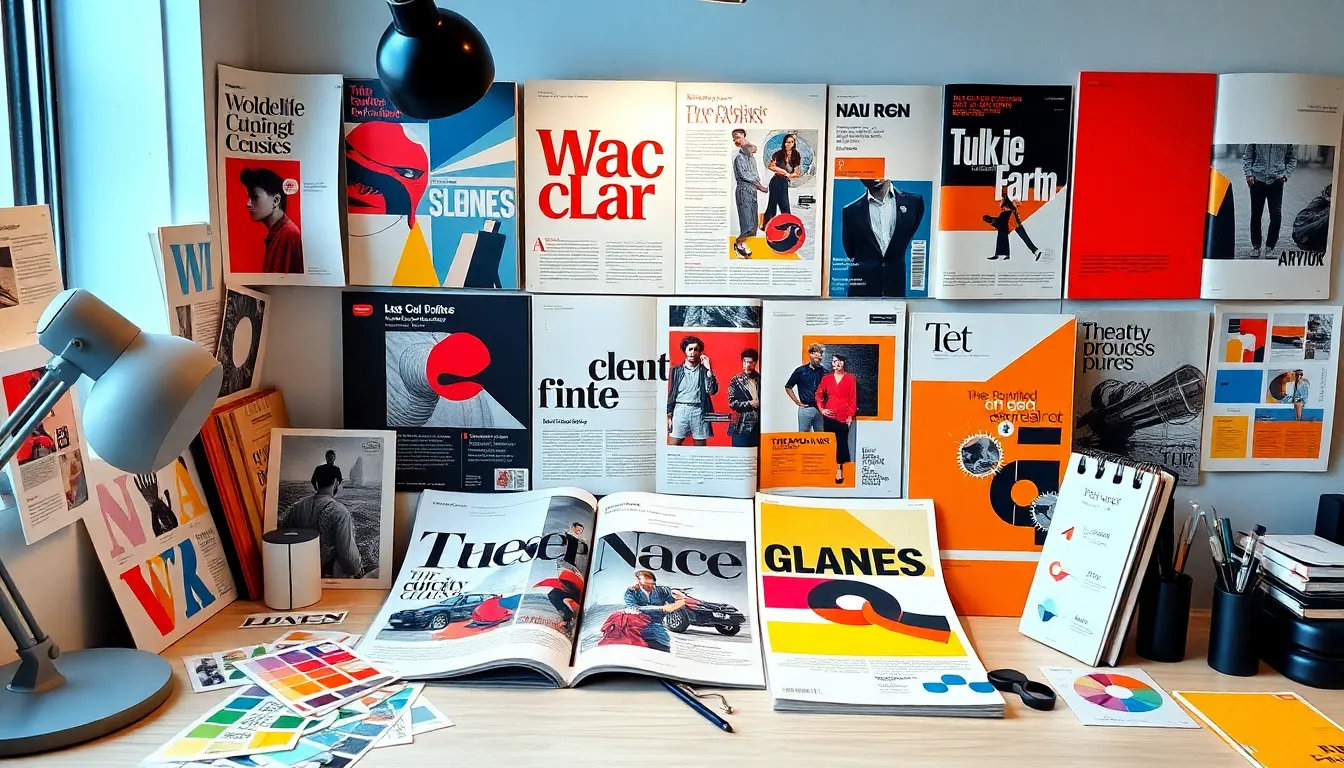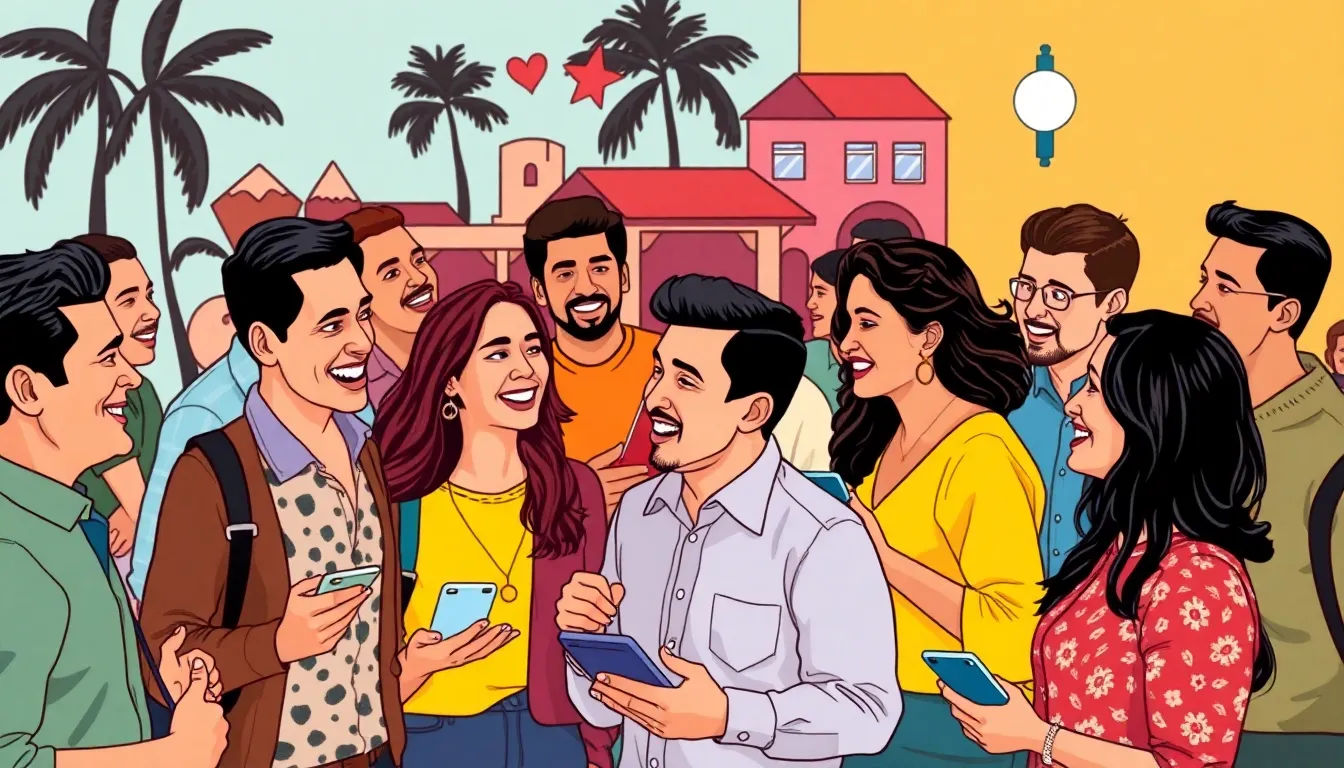In a world where scrolling through endless feeds is the norm, modern magazine aesthetics have emerged as a breath of fresh air. Gone are the days of bland layouts and uninspired photography. Today’s magazines are visual feasts, blending art and storytelling in ways that make flipping through the pages feel like a mini-vacation.
Imagine glossy pages that practically beg to be touched, vibrant colors that pop off the paper, and typography so stylish it could strut down a runway. These publications don’t just inform; they inspire, provoke thought, and sometimes even make you snort your coffee. As they embrace bold designs and innovative formats, modern magazines are redefining what it means to engage an audience. Dive into the captivating world of magazine aesthetics and discover how they’re shaping the way we consume content today.
Table of Contents
ToggleThe Evolution of Modern Magazine Aesthetics
Modern magazine aesthetics have shifted significantly over the years, moving from uninspired layouts to dynamic visual experiences. This transformation highlights the importance of engaging design in attracting and retaining readers.
Historical Context
Print magazines emerged in the 17th century, with layout and design following a basic, functional approach. By the late 19th century, industrial advancements allowed for more vibrant color printing and creative layouts. The introduction of modernism in the early 20th century marked a turning point, emphasizing minimalism and functionality. Post-World War II, magazines embraced graphic design movements, encapsulating societal trends through imagery and typography. Throughout the late 20th century, technology propelled further changes, leading to the rise of digital publications and transformed reading habits.
Key Influences on Design
Several factors have shaped contemporary magazine aesthetics. Digital advancements revolutionized accessibility and design possibilities, enabling interactive elements. Cultural trends also play a crucial role, with social movements influencing themes and representations in magazines. Influencers and social media presence have altered aesthetic choices, emphasizing visual storytelling and authenticity. Sustainability concerns encourage eco-friendly materials and practices in printing. Successful magazines adapt to these influences, fostering unique identities through innovative layouts, typography, and imagery.
Elements of Modern Magazine Aesthetics

Modern magazine aesthetics combine several elements that work together to create visually striking layouts. Typography trends and color schemes play crucial roles in enhancing content engagement and readability.
Typography Trends
Contemporary magazines often feature bold, sans-serif fonts that improve legibility. These fonts complement minimalistic designs, making each article visually appealing. Experimentation with sizes and weights creates distinct hierarchies, guiding readers through the content. Handwritten or brush script fonts add a personal touch, enhancing authenticity. Moreover, dynamic typography incorporates movement and layering, catching the reader’s eye while breaking the traditional grid structure. Magazines prioritize innovation, using typography to express individuality and reflect their unique voice while maintaining clarity.
Color Schemes and Palettes
Vibrant color schemes dominate modern magazine aesthetics, attracting reader attention effectively. Designers often choose contrasting colors, which enhance visual impact and create excitement. Pastel palettes offer a softer approach, providing a sense of calm and sophistication. Additionally, earthy and natural tones reflect growing sustainability trends, aligning with eco-friendly movements. Magnetic color combinations are often used to evoke emotions and support storytelling. Modern magazines meticulously select colors to reinforce branding, ensuring visual consistency across various platforms while enhancing reader experience.
Case Studies of Iconic Magazines
Examining iconic magazines reveals innovative design approaches that shape modern aesthetics and enhance reader engagement.
Magazine A: Innovative Approaches
This magazine stands out through its commitment to interactive layouts. Readers encounter augmented reality features that bring printed content to life. Dynamic visuals draw attention, while bold typography enhances readability. The strategic use of white space creates a clean, organized look. By integrating multimedia elements, this magazine not only informs but also captivates audiences. Each issue reflects current cultural trends, ensuring relevance and resonance with its readers.
Magazine B: Visual Storytelling
Visual storytelling defines this magazine’s identity. Striking imagery paired with concise text communicates powerful narratives. Photographs often evoke emotions, effectively drawing readers into the story. Each element is meticulously curated to create a cohesive experience. Unique design choices, such as asymmetrical layouts, captivate visual interest, while thoughtful color palettes enhance thematic depth. Notably, this publication embraces diverse voices, reflecting a range of perspectives and experiences through its content.
The Role of Digital Media
Digital media significantly influences modern magazine aesthetics, shaping design choices and content delivery. The rise of technology has transformed how magazines engage with audiences.
Impact on Print Magazines
Print magazines face a brave new world, grappling with digital competition. Templates evolve, embracing vibrant designs and interactive elements that reflect their online counterparts. Many publications balance print and digital offerings, creating a hybrid experience. Audiences appreciate tactile qualities in print, while still desiring the interactivity found in digital platforms. Magazines integrating augmented reality features, like Magazine A, elevate reader engagement, merging the physical and digital realms. Designers emphasize visual storytelling, tailoring content to keep print relevant.
Emergence of Online Formats
Online formats emerge as vital channels for modern magazines, redefining how content is consumed. Many publications adopt websites and social media, allowing for immediate access to engaging content. Web articles often feature multimedia elements, enriching narratives through videos and galleries. Digital-first strategies build unique identities, where design becomes fluid and responsive. Enhanced visuals capture user attention; bold imagery paired with concise text resonates strongly with online audiences. Social media platforms amplify reach, fostering communities around shared interests, which magazine brands now leverage for growth.
Modern magazine aesthetics represent a vibrant fusion of creativity and technology. This evolution not only enhances visual appeal but also transforms reader engagement. By prioritizing bold designs and innovative formats, magazines are redefining how stories are told and experienced.
The shift towards sustainability and the integration of digital elements reflect a broader cultural awareness. As magazines continue to adapt to changing trends and technologies, their role in shaping narratives and influencing audiences remains vital. The future of magazine design promises to be as dynamic and diverse as the stories it seeks to tell.




